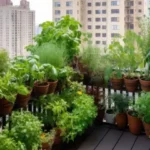Are you ready to bring the beauty of nature indoors and enjoy the delights of gardening year-round? Creating an indoor winter garden is the perfect way to do just that! But before you start, let’s dive into the essential factors that can make or break your indoor garden’s success.
An indoor winter garden can improve air quality, reduce stress, enhance mood, and promote relaxation. The ideal indoor garden plants include succulents, philodendrons, and herbs like basil and thyme. It’s best to control your temperature around 60°F to 75°F (15°C to 24°C) and provide proper ventilation to offer a suitable indoor green space. Additionally, to offer your foliage even more benefits, consider growing them under LED or HID grow lights, and prune regularly. Lastly, check soil moisture often to avoid over or underwatering, as both can cause unnecessary challenges to your flourishing garden.
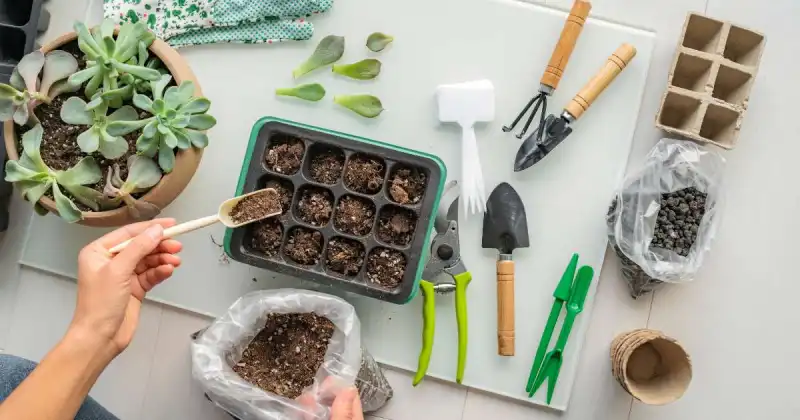
In this article, I’ll show you how to set up your indoor winter garden, from choosing the perfect space to personalizing your area, making it uniquely yours. While organizing your indoor greenery is only one of the various alternative container gardening ideas, I’ll also provide some bonus tips and a troubleshooting guide to ensure your plants’ health remains high, even if problems arise.
With my help, you will be on your way to creating a stunning and thriving indoor winter garden that may be the envy of your neighborhood in no time!
Humble Highlights
- Save time by discovering and following these 4 key factors to set up your indoor winter garden space accordingly so you can enjoy the color, fragrance, and homegrown food through the coldest months of the year.
- Save money by knowing what plants and flowers do best indoors so you never again waste your hard-earned cash on seeds that don’t germinate or plants that underperform.
- Learn the undervalued benefits of maintaining an indoor garden AND some simple DIY tips on creating your garden paradise retreat on a shoestring budget!
Plan Your Indoor Winter Garden
To have a flourishing indoor winter garden, sound planning is in order, including:
- Choosing The Right Space
- Selecting Your Plants
- Regular Maintenance
- Personalizing And Decorating Till Your Heart’s Content
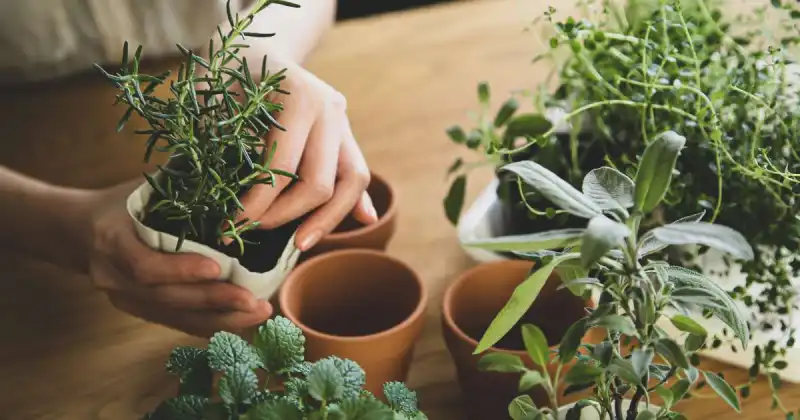
Let’s consider these crucial factors to help you organize your indoor green space today.
Choosing The Right Space: Lighting, Temperature, And Humidity
Select a space in your home that receives good natural light for an indoor winter garden. South-facing windows are usually best for natural light exposure, but east and west-facing windows can also work well. If natural light is limited in your region, consider using artificial grow lights as a supplement. After all, your plants will need something to keep them happy over the colder winter months. 1
Determine the type and intensity of artificial light your plants require and choose the appropriate lighting system for your space. Fortunately, many excellent options are available today, including fluorescent lights, LED, and HID (high-intensity discharge). LED lights are the most energy-efficient and environmentally friendly and can produce specific wavelengths of light that are optimal for plant growth.
Your garden’s temperature should also be controlled, monitored, and kept within a range suitable for the plants you intend to grow. Most indoor plants prefer temperatures between 60°F and 75°F (15°C to 24°C), although some plants may require cooler or warmer temperatures.
Your space should also have good ventilation and proper air circulation to prevent the buildup of moisture or harmful indoor pollutants. Consider opening windows to allow a moderate breeze to sweep throughout your room if you live in a region where mild days are standard and if weather permits.
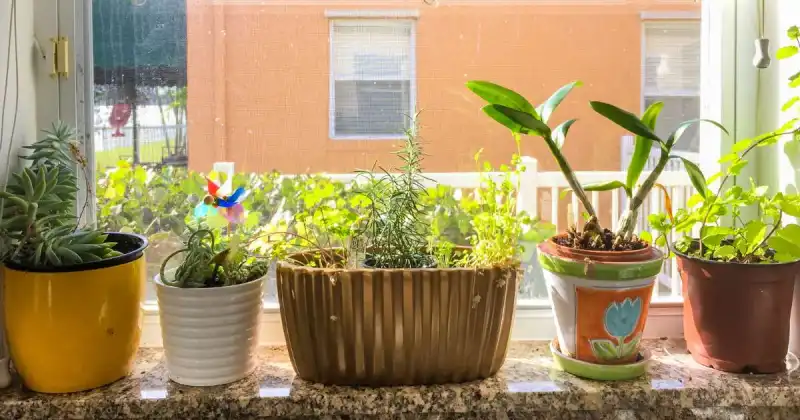
Selecting Plants That Thrive Indoors
Although it may be a nice thought, not all plants are well-suited for indoor growing. After considering the factors such as lighting requirements, temperature, and humidity levels of your indoor area, choose plants that are appropriately sized for the available space and complement each other regarding their growth habits and maintenance requirements. 2
Basic Things To Consider
- Consider plants such as palms or larger tropical plants that like to spread out for larger indoor areas.
- Consider plants with complementary growth habits to maximize space and prevent overcrowding. Some excellent options include trailing plants, such as pothos or spider plants, that enjoy maturing in hanging baskets. Conversely, upright plants such as snake plants or peace lilies do well in pots on the ground or on plant stands.
- Select plants with similar maintenance requirements to make it easier to care for them. For example, plants with similar watering, fertilizing, or pruning schedules can be grouped, making maintenance a breeze.
- Another idea is to choose plants with complementary colors and textures to create an aesthetically pleasing indoor garden. Consider plants with variegated leaves or flowers that produce different colors to create a visually exciting display throughout winter. Prayer plants, calatheas, polka dot plants, and Chinese money plants make excellent and beautiful choices.
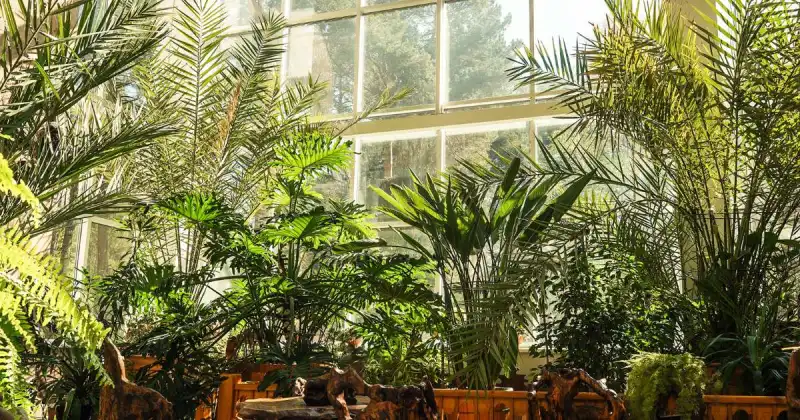
Regular Maintenance
Maintaining an indoor winter garden requires regular care and attention. Create a routine maintenance plan that includes watering, fertilizing, pruning, and re-potting as necessary. Monitor your plants regularly for signs of problems and address them promptly.
It’s a great habit to check daily for signs of wilting, yellowing leaves, or pests while watering and checking soil moisture saturation can be done weekly. Monthly tasks may include determining if your plants are overgrown or root bound. And seasonal assignments can include reassessing and amending your plant care requirements if your plans show dormancy. 3
Develop a watering and fertilization schedule that meets the demands of your plants. Set up a practical pest management plan which includes:
- Prevention: keeping your indoor space clean and free of debris
- Identification: spot any pests or diseases and offer the proper treatment
- Treatment: includes using insecticidal soap, Neem oil, or other natural remedies like additional essential oils
- Conduct maintenance regularly
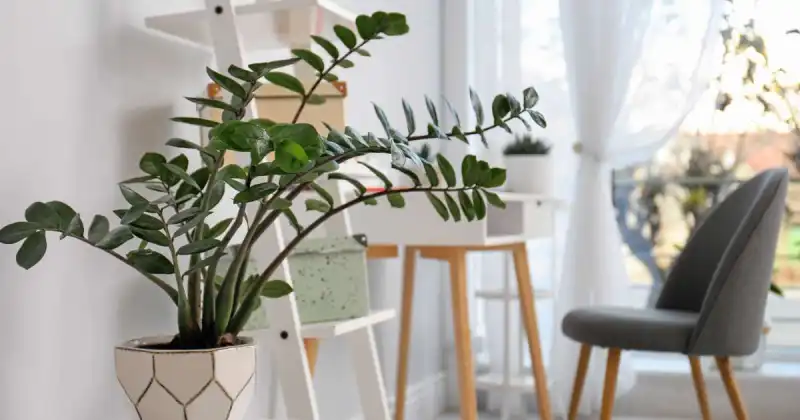
Consider pruning and trimming requirements for each plant and their re-potting and soil maintenance needs. By planning for maintenance in advance, you can help ensure the health and vitality of your indoor winter garden and confidently know both you and your plants are well-prepared for any challenge. 4
Personalize And Decorate
Adding personal touches and flare to your indoor winter garden is a great way to make it a more inviting and unique space. Here are some ideas for incorporating decorative elements into your indoor garden:
- Hang paintings, prints, or other artwork on the walls near your indoor garden to create a visually appealing display.
- Consider choosing furniture made from natural materials such as wood, wicker, or rattan to create a fun, relaxing, and cohesive look with the natural elements in your garden.
- Incorporate decorative elements such as sculptures, statues, or other decorative objects that complement the colors and textures of your plants.
- Add stone elements, such as a small rock garden, to your indoor garden.
Setting Up Your Indoor Winter Garden
Setting up your indoor winter garden doesn’t have to be time-intensive. It takes a little imagination, creativity, and organization to see it through. Select structurally sound and visually appealing pots and ensure you place your plants in a quality potting mix. Watering and fertilizing will be your most important tasks over the winter, so set up a routine and stick to it. Although insect activity slows during winter, pests can enter your home and invade your plants. Be sure to address issues quickly and efficiently.

Containers And Potting Mix
Look for containers that are the appropriate size for your plants, provide some room for growth, and provide good drainage. Consider the material of the containers, such as plastic, terracotta, or ceramic. Opt for materials that will not leach harmful chemicals into the soil to make the environment even more plant-friendly. 5
Choose a high-quality potting mix that is appropriate for the types of plants you plan to grow. Consider the pH, nutrient content, and drainage qualities of the mix.
- Most indoor plants prefer slightly acidic soil with a pH range of 6.0 to 7.0. You can test the pH of your potting mix with a home soil pH testing kit.
- Choose a quality potting mix with a balanced blend of nutrients, including nitrogen, phosphorus, potassium, and micronutrients, such as calcium, magnesium, and iron.
- Investing in a potting mix containing perlite, vermiculite, or sand helps improve drainage and is a wise choice for the humble gardener.
- Potting mix that contains materials such as peat moss, coconut coir, or compost is also an excellent idea as these natural materials help improve soil aeration, a necessary attribute of healthy plants.
Watering And Fertilizing
Water your plants when the top inch of soil feels dry to the touch, but be careful not to overwater, as this can lead to root rot and other diseases if your soil becomes compacted.
Choose a high-quality fertilizer specifically designed for indoor plants and follow the manufacturer’s instructions for application. Adjusting your watering and fertilizing schedule based on the specific needs of your plants is crucial to maintaining healthy growth.
Here is an example of how you might amend your watering and fertilizing schedule based on the specific needs of your plants:
- Succulents and cacti: Water them once every 2-3 weeks or when the soil is dry to the touch. Fertilize them with a low-nitrogen fertilizer every 2-3 months during their active growth period.
- Tropical plants: Water them when the soil feels slightly dry to the touch, typically every 7-10 days. Fertilize them every 2-4 weeks during their active growth period with a balanced fertilizer, like a 10-10-10, for example.
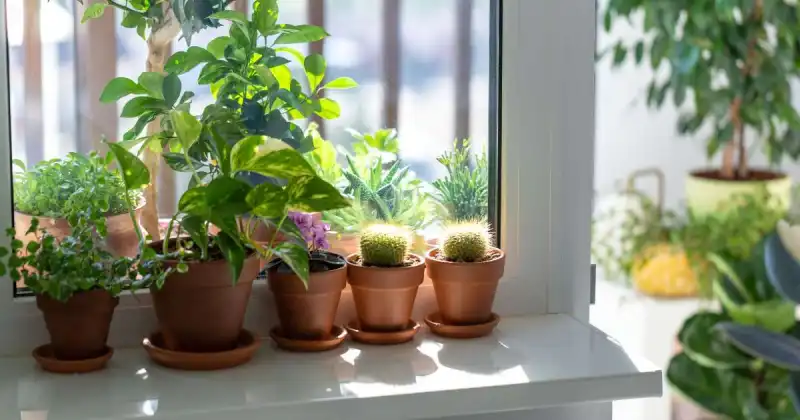
- Herbs and vegetables: Basil prefers moist soil and may need to be watered every 3-4 days. On the other hand, mint prefers drier soil and may only need to be watered once a week. Fertilize herbs and vegetables with a balanced fertilizer every 4-6 weeks.
- Flowers: African violets prefer slightly moist soil and may need to be watered every 5-7 days. Orchids prefer drier soil and may only need hydration once every 7-10 days. Fertilize flowers with a balanced fertilizer every 2-4 weeks during active growth.
Pest Control
Unfortunately, indoor plants are not immune to pests. Therefore, it’s essential to be vigilant about pest control. Regularly inspecting your plants for signs of infestation, such as yellowing leaves, webs, or crawling insects, is crucial during winter, as these populations can swell in warm and moist environments. Treat any infestations immediately with an appropriate pest control product or natural remedies, such as soap and water, a damp cloth, or essential oils. 6
Keep your plants away from doors, windows, and central air vents, which can change your indoor garden’s microclimate and stunt your plants’ growth. Moreover, if you bring plants into your home from your yard or the nearest garden center where you’ve purchased them, it’s best to isolate your green friends from your primary winter garden until you determine they are pest-free.
Best Plants For Indoor Winter Gardens
Low-maintenance plants with air-purifying qualities are great options for indoor winter gardening. Some of them include the following:
- Succulents And Cacti
- Tropical Plants
- Herbs And Vegetables
- Flowers
- Microgreens

Succulents And Cacti
Succulents and cacti are excellent choices for indoor winter gardens. Some popular succulents and cacti plants for indoor gardens include jade, snake, and prickly pear cacti. Other examples include aloe vera and Christmas cactus.
Beneficial Reasons To Include Succulents And Cacti In Your Garden
- They are drought-tolerant and can thrive in low-humidity environments.
- They require minimal water and can thrive in bright, indirect light.
Tropical Plants
Popular varieties of tropical plants for indoor gardens include the Bird of Paradise, which produces large, striking orange and blue flowers resembling a bird’s head. The philodendron is another popular choice, with its glossy, heart-shaped leaves ranging in color from deep green to bright chartreuse. Bromeliads are another great option, with their bold, colorful flowers and striking foliage ranging from spiky to soft and feathery.
Beneficial Reasons To Include Tropical Plants In Your Garden
- Provide lush foliage and colorful blooms that add a tropical feel to your home, even during the middle of winter.
- Advantageous air-purifying properties, which can help improve the quality of the air within your home.
- Popular plants like aloe vera may contain medicinal properties, which can be used to soothe skin irritation or minor burns.

Herbs And Vegetables
Some popular herbs in indoor gardens include basil, parsley, and thyme. But don’t neglect your leafy greens! Vegetables like lettuce, spinach, and kale can also be successfully grown indoors. When growing herbs and vegetables indoors, choose appropriate varieties that will do well for the light and space available. 7
Beneficial Reasons To Include Herbs And Veggies In Your Garden
- They offer access to fresh produce even when it’s not in season.
- Herbs and vegetables are rich in vitamins, minerals, and antioxidants, making them essential to a healthy diet.
- It allows you to maximize indoor space and save money on groceries, depending on how much of them you cultivate.
- Provide a fragrant aroma that can help freshen up your indoor space.
The video below details exactly how you can grow your own grub over winter. Just because it gets cold outside doesn’t mean you can’t continue to mature your plants and reap their benefits inside. Remember, you’ll need quality seeds, soil, light, and some space to be successful.
Flowers
With the proper care, indoor flowers can bloom all winter long. Some popular varieties of flowers for indoor gardens include orchids, African violets, and cyclamen. However, when choosing flowers for your indoor garden, consider their lighting and temperature requirements, as well as their size and maintenance needs, as some flowers can be pretty temperamental.
Beneficial Reasons To Include Flowers In Your Garden
- Flowers add a fresh pop of color and beauty to your indoor space, helping to brighten up dreary winter days.
- Beautiful blooms like jasmine and gardenias provide a pleasant fragrance that can help freshen up your indoor space.
- Flowers have been shown to affect mood positively and can help reduce stress and anxiety.
- Peace lilies and spider plants have been shown to help purify the air by removing some indoor toxins and pollutants.
- Lavender and chamomile flowers are calming and can help improve sleep quality, especially if you’ve reserved a sunny windowsill in the bedroom.
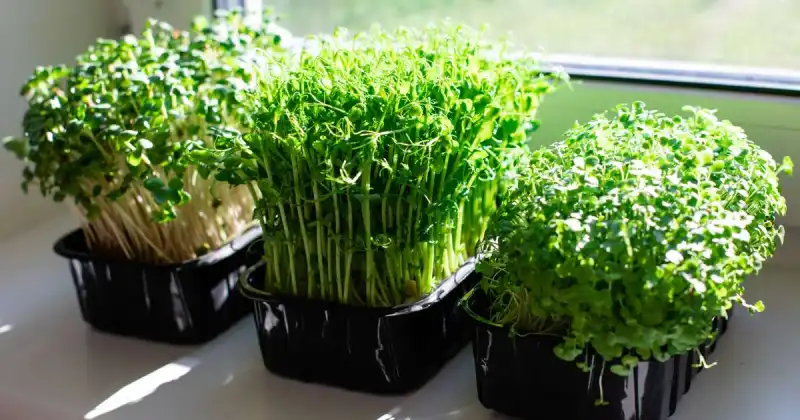
Microgreens
Microgreens are a great way to bring fresh, nutrient-rich greens into your home all year round, even during the winter months when outdoor gardening may not be possible. These tiny plants are easy to grow and harvested at an early stage, typically just one to three weeks after planting, when their first true leaves have appeared.
Beneficial Reasons To Include Microgreens In Your Garden
- These plants are incredibly easy to grow, take up little room, and require only a few needed materials to get started.
- Provide a quick harvest within a few weeks.
- They are packed with nutrients and are incredibly versatile in the kitchen, finding their way into soups, smoothies, juices, garnishes, tacos, pizzas, salads, and much more.
- Indoor growing allows you to control the temperature, light, and moisture levels, ensuring optimal conditions and better management from outdoor challenges like unpredictable weather, temperature swings, and pests.
Maximizing The Benefits Of Your Indoor Winter Garden
There are four expected benefits of creating and maintaining an indoor winter garden, including:
- Improving Air Quality
- Reducing Stress
- Enhancing Mood
- Promoting Relaxation
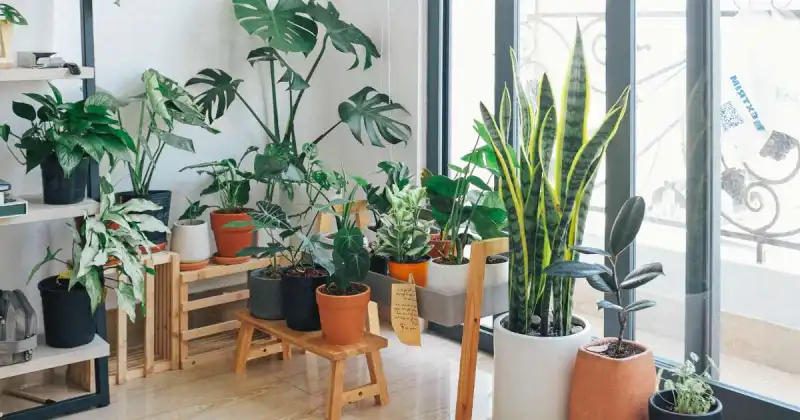
Below, we’ll take a closer look at each advantage so you can determine if an indoor garden is proper for you.
Improving Air Quality
Indoor winter gardens can help improve air quality by absorbing indoor pollutants and increasing oxygen levels. Certain plants, such as spider plants and peace lilies, are especially effective at removing harmful toxins from the air. 8
Reducing Stress
Indoor winter gardens can provide a calming and relaxing atmosphere, helping to reduce stress and anxiety. Because caring for plants can also be a meditative and stress-reducing activity, consider placing your indoor garden in a space where you typically relax, such as a bedroom, family, or living room.
Enhancing Mood
Indoor winter gardens can enhance mood by providing a natural and peaceful environment. The visual beauty of plants and flowers, like English Ivy, lilies, and aloe vera, can create a sense of joy and happiness, especially during the coldest months of the year. Additionally, caring for plants and watching them grow can provide a sense of fulfillment and satisfaction.
The video below reviews plenty of colorful indoor plant options that tolerate low light. Remember, to maximize your indoor winter garden, it’s best to choose from a variety of colors and textures to truly transform the space that will leave you feeling rejuvenated and fulfilled.
Promoting Relaxation
Indoor winter gardens can promote relaxation by creating a serene and inviting atmosphere. Consider adding elements such as a small water feature or wind chimes to create a calming soundscape if space is available. Choosing plants with soft or soothing colors and textures encourages a sense of tranquility and offers the ability to unwind and rejuvenate after a long day.
Budget-Friendly Tips For Your Indoor Winter Garden
Creating your indoor winter garden doesn’t need to be expensive. Choosing affordable and easy-to-grow plants that enjoy the sun and tolerate shade is an excellent start to filling your area. You can also DIY yourself into a great indoor garden retreat by taking an interest in flea markets, garage sales, or even your backyard and recycling or re-purposing items. Finally, growing your own plants from seeds or cuttings is a very cost-friendly way to start an indoor garden oasis.
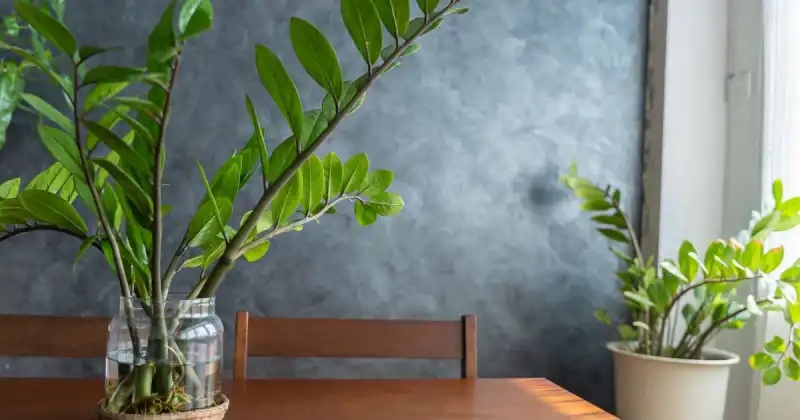
Choose Affordable Plants
When building your indoor winter garden on a budget, consider choosing affordable plants. Look for varieties that are easy to grow, enjoy growing indoors, and are readily available, such as spider plants or pothos. Consider purchasing plants in smaller sizes or starting with seeds or cuttings, which are often less expensive than mature plants.
Use Recycled Materials
Using recycled materials is a great way to save money while building your indoor winter garden. Look for materials such as old mason jars, tin cans, or old furniture that can be re-purposed into planters or used as accent pieces. If you live near woods, stones, bark, and even pinecones may be freely available. If residing closer to the beach, plenty of seashells, driftwood, and even sea glass make decorative elements. Get the whole family involved for the afternoon and make it a fun and creative experience. 9
Propagating Your Plants
Propagating your plants is a budget-friendly way to expand your indoor winter garden without breaking the bank. Many indoor plants can be quickly grown and re-planted from cuttings, including pothos, spider plants, and philodendrons. Raising your green friends can save money on purchasing new plants while adding variety to your indoor garden.
This video demonstrates just how easy it is to regrow common indoor plants in plain water for some serious savings! Then, once they are mature enough, simply transfer them into their own pot and adjust your watering and fertilizing schedule based on the specific needs of each.
Saving Money On Utilities
Indoor winter gardens can be energy-intensive, especially if you are using grow lights or humidifiers. Consider using energy-efficient LED grow lights or natural light whenever possible to save money on utilities. You can also reduce humidity levels by using a dehumidifier or placing plants on a tray of pebbles and water rather than using a humidifier.
Additionally, be sure to turn off grow lights and other equipment when they are not in use to save on energy costs and give your plants a rest and recovery period.
In summary, follow these easy, budget-friendly tips for your winter indoor garden:
- Start with small plants or seeds rather than buying larger plants. It may take a little longer to receive their full effect, but you’ll enjoy growing your plants as your pockets remain a little heavier.
- Consider re-purposing items around your home as planters, such as teacups, mason jars, or tin cans. If you’re already an avid backyard gardener, chances are you have some extra pots that can be well used in your indoor setting.
- Simple items, like stones or bark from the yard, can be brought inside and used as decorative and textural pieces for your garden.
- Creating your plant hangers from macrame or rope provides another creative element that any grower can accomplish.
- If your space has access to a sunny windowsill or shelf, consider placing your herbs in small pots or jars to provide them with plenty of natural sunlight.
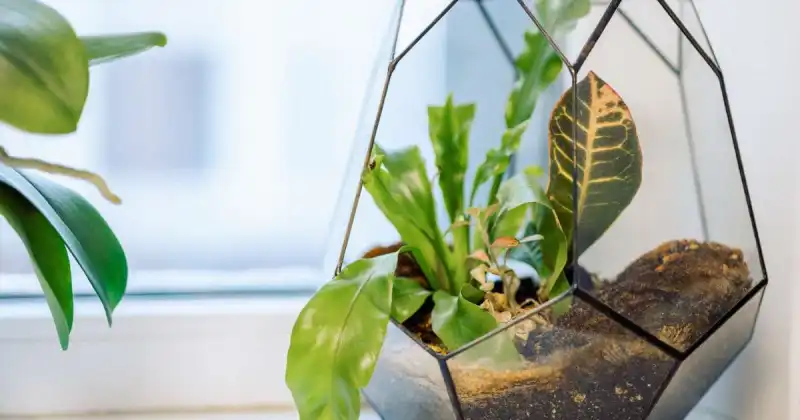
- Take cuttings and trimmings from existing plants to propagate and grow new plants. Be sure to give them their own container with room to grow and stretch out.
- If you have a sunny spot available, use natural light instead of expensive grow lights or choose energy-efficient LED lights. However, this may not work for growers who live in a region with diminished daylight hours, take advantage of it if you are fortunate enough to have an excellent lighted area.
- Group plants together to create a lush, full, and complete look rather than buying many plants spread too thinly around your space.
- Consider using organically rich compost or homemade soil mix instead of buying expensive potting soil. Compost, in particular, is exceptionally environmentally friendly by slashing household waste while providing excellent nutrition for your indoor winter garden.
Troubleshooting Your Indoor Winter Garden
There are several methods how to keep your indoor winter garden healthy and vibrant all winter long, including:
- Identifying problems and quickly taking action
- Treating pest and disease issues
- Ensuring your plants aren’t over or under watered
- Amending lighting issues

Let’s look at each and see how you can keep your garden going strong.
Identifying Common Problems
Identifying common problems is an essential part of troubleshooting your indoor winter garden. Some common issues you may encounter include yellowing leaves, leaf drop, pests, and diseases. Regularly inspect your plants for signs of problems and address them immediately to prevent further damage. 10
Treating Pests And Diseases
Common pests affecting indoor plants include spider mites, mealybugs, and scale insects. Diseases such as root rot and powdery mildew in your backyard garden can also be problematic indoors.
Treat pests and diseases with appropriate remedies such as insecticidal soap, Neem oil, or copper fungicide. Be sure to follow the manufacturer’s instructions and use caution when applying any treatments. When applying these treatments, wearing safety gear, such as gloves and eyewear, is essential.
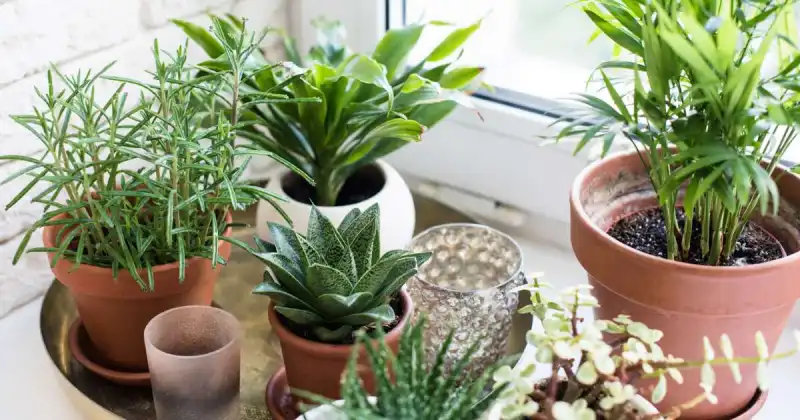
Dealing With Overwatering And Underwatering
One way to quickly check if indoor plants need water is to stick your finger about an inch into the soil. If your finger is dry, it is time to water. Conversely, if your finger is moist, you can wait a bit longer to hydrate.
Overwatering can lead to root rot and other problems, especially with compacted, poorly draining soil. On the other hand, underwatering can cause plants to wilt and die. Be sure to water your plants only when the top inch of soil feels dry to the touch, and adjust your watering schedule based on your plants’ specific and unique needs.
Fixing Lighting Issues
Lighting issues can be a common problem in indoor winter gardens due to shortened daylight hours. Insufficient light can lead to stunted plant growth or yellowing leaves, while too much light, especially artificial light, can cause leaf burn or other problems. 11
If you are experiencing lighting issues because your region doesn’t receive adequate daylight, consider adjusting the placement or intensity of your indoor grow lights to reflect more consistency for your plants. As always, monitor your plants regularly and adjust your lighting as necessary.
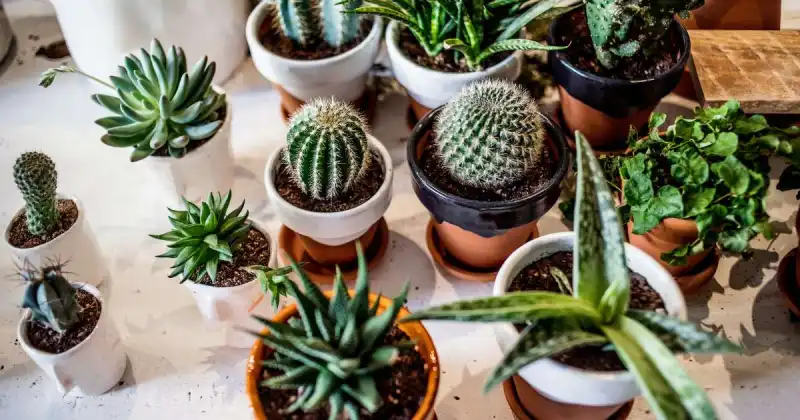
Conclusion
Creating an indoor winter garden can be a great way to bring the natural beauty of nature into your home and enjoy the benefits of plants all year round. When planning your indoor garden, it is crucial to consider factors such as lighting, temperature, and humidity to ensure your plants flourish over the coldest months of the year.
Some of the best plant varieties that offer plenty of food, fragrance, creativity, and color include succulents, cacti, tropical Plants, herbs and vegetables, microgreens, and flowers. These fantastic green options can improve air quality, reduce stress, and encourage relaxation throughout the winter.
Remember, setting up your winter oasis doesn’t need to take a ton of time. All it takes is a little imagination by strategically placing your plants in visually appealing areas, including a quality potting mix to provide adequate nutrition and water and fertilize your foliage accordingly.
Personalizing and designing your indoor garden can create a beautiful, thriving environment that brings nature indoors. With creativity and planning, anyone can start their indoor garden and enjoy the beauty, benefits, food, and warmth throughout winter.
What plants do you enjoy most in your indoor winter garden? Be sure to leave a comment below and let us know what flourishes well in your inside space!
SOURCES
- Houseplantexpert.com – Indoor Plants Temperature Guide
- ScienceDirect – Why Garden? Attitudes And The Perceived Health Benefits Of Home Gardening
- ResearchGate – The Benefits Of Gardening And Food Growing For Health And Wellbeing
- University Of Illinois Urbana-Champaign, College Of Agricultural, Consumer & Environmental Sciences – Indoor Gardening Can Brighten Winter Doldrums
- The University Of Vermont, Extension – Growing Greens Indoors In Winter
- Utah State University, Extension – Ask An Expert: Five Tips For Indoor Gardening
- University Of Minnesota, Extension – Lighting For Indoor Plants And Starting Seeds
- Franklin County Extension Office, Martin-Gatton College Of Agriculture, Food And Environment – Make Winter Green-Thumb Friendly With An Indoor Garden
- North Carolina Cooperative Extension – Houseplants For Winter Gardening Indoors
- United States Environmental Protection Agency – Indoor Air Quality
- Wikipedia – Spathiphyllum

